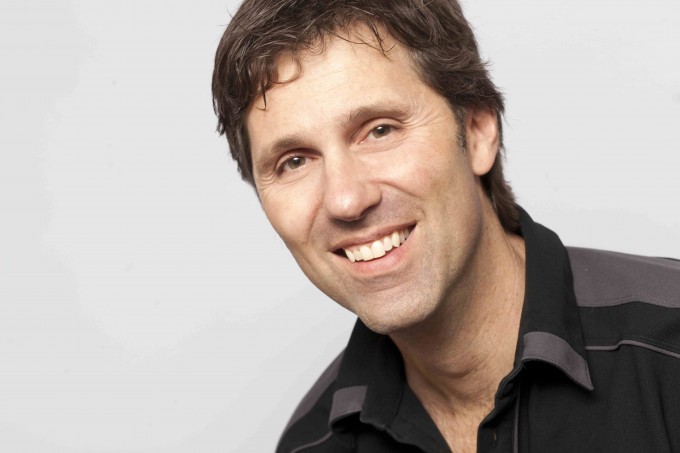Conservative Dentistry with Cerasmart- Inlays/Onlays
One of the greatest advantages we have as Cerec Doctors is the ability to conservatively treat caries without having to cut the whole tooth down. Nice smooth margins, no undercuts, and a really clean Cerec scan is key! .
Here is a case using Cerasmart A1 HT.
I like to pack a 00 Cord, then a size 1, after 2 minutes I pull the second cord.



No adjustments needed!



Immediately post cementation. In a few weeks time, these just disappear!

Looks nice! What kind of adhesive sticks are those? Those dont look like the expensive ivoclar ones.
Brett,
Nice work. How do you bill this out? If you're charging for inlays/onlays....how do your fees compare to your crown fee...% wise?
Thanks,
JJ
On 3/29/2018 at 10:38 am, Jeff Johnson said...Brett,
Nice work. How do you bill this out? If you're charging for inlays/onlays....how do your fees compare to your crown fee...% wise?
Thanks,
JJ
Only onlay in that photo is the second molar, other two are inlays.
On 3/29/2018 at 10:38 am, Jeff Johnson said...Brett,
Nice work. How do you bill this out? If you're charging for inlays/onlays....how do your fees compare to your crown fee...% wise?
Thanks,
JJ
Great question, this was brought up in a thread about a month ago. On that thread, there seemed to be a lot of different ways doctors do it so to each their own. What has worked best for me is I bill them as a 3/4 Crown. Insurance does not like the words "Inlay/Onlay", which is another story. I feel these are more difficult to make than a full crown so I still charge my full crown fee. However, it leaves me flexibility to decide if I want to charge less if a patient is hesitant and would rather do large composites. I know these will last much longer and is a better treatment for the patient.
Very nice work Brett.
Cerasmart is an awesome material for inlays and inlays.
We have had good success for insurances paying for onlays, but they do downgrade inlays to composite fee and we just charge the patient extra for the block.
VERY nice work Brett.... admittedly on that first molar, I might be more inclined to more cusp coverage, BUT Cerasmart is great material for what you've got going there,
Also, whether the first molar is an onlay or inlay is a little murky... I would have not hestitation calling it an onlay... and not a Bil Dickerson onlay... Just AWESOME work!
Mark
Billing/Insurance coding aside. That is some beautiful dentistry and a great service to your patient.
Nice work.
Any special tips in dealing with the sprues?
Do you bond them all at the same time?
Great job here.
One thing I would like to see is 5 year follow up photos to see how those occlusal cavo-surface margins are holding up.
CeraSmart is a relatively new material, and when I started my cerec journey 14 years ago, I was prepping very similar to your style, but found that the occlusal margins were almost always the source of failure after a few years of service. Granted this was with vita mark 2, so maybe a different beast....
So now I do mostly crown-lays with e.max and in the past 10 years I cannot recall a single marginal failure. The failures have been material fractures where I have not prepped adequately (usually DL cusps of lower 12 year molars).
Thanks for sharing and post a recall photo in a few years and I hope I am wrong.
On 3/29/2018 at 6:16 pm, Bob Conte said...Billing/Insurance coding aside. That is some beautiful dentistry and a great service to your patient.
Agree 1000%
On 3/30/2018 at 5:57 am, Michael Saso said... Nice work. Any special tips in dealing with the sprues? Do you bond them all at the same time?
Sprues- I always get them out of the interproximal where possible. In the case of #30 where I could not, I always put it dead center of the broadest contact, in this case the distal. Tip- you are better off leaving a little sprue then smoothing away a contact! In this case I got lucky, but more often than not I have to do some fine tuning to the interproximal contacts with a redstripe Barrel diamond. It is always easier to take away than to add!
Yes bond them all at the same time, I do not like to risk cured cement preventing me seating the other restorations. Move quickly, and only Tak cure on the buccal and lingual- avoid the occlusal as you won't be able to get floss through the contacts if you do.
Hope that helps!
On 3/30/2018 at 7:00 am, Brad Dorsch said...Great job here.
One thing I would like to see is 5 year follow up photos to see how those occlusal cavo-surface margins are holding up.
CeraSmart is a relatively new material, and when I started my cerec journey 14 years ago, I was prepping very similar to your style, but found that the occlusal margins were almost always the source of failure after a few years of service. Granted this was with vita mark 2, so maybe a different beast....
So now I do mostly crown-lays with e.max and in the past 10 years I cannot recall a single marginal failure. The failures have been material fractures where I have not prepped adequately (usually DL cusps of lower 12 year molars).
Thanks for sharing and post a recall photo in a few years and I hope I am wrong.
Yes, I agree 100%. I too am curious to know how the material holds up. I will try and find a post op patient in the next few weeks... However, I am optimistic, as the materials, bonding agents, and cements have made leaps and bonds from the 14 years ago when you started your Cerec journey.
I'm still a newbie here but for inlays we bill the patient a "materials fee" of $125 on top of our composite fee. We tell the patient the pros of Lava (haven't looked into Cerasmart yet) over resin. I'm in a rural community so sometimes they go for it and sometimes not. We basically tell the patient their OOP is $X for resin and $X for Lava.
Very nice result!
How does everyone account for the Ins battle? We are only in network with a few and we provide an estimate and the Ins will at times only cover a fraction. We would like to give an accurate estimate, but most Ins will only give you the top 20 procedures. So when a claim is denied, downcoded, etc even though they claim to cover it how is it then presented to the patient (before the procedure and after the actual claim is processed)?
I try to explain that it will be a better restoration and give me better control of the contacts, etc. some will be good with it while a few flip out later (despite our attempt to be transparent before initiating treatment).
Margins look really nice so far for those resin blocks, but the occlusal wear is a real bummer to me...





















